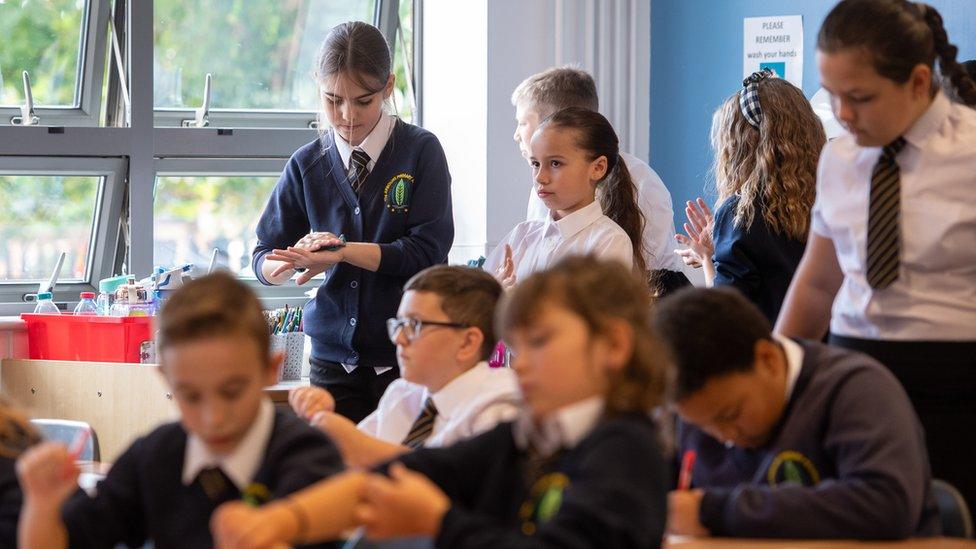Rising numbers of secondary pupils sent home in Covid cases
- Published
- comments

The number of secondary schools in England sending home pupils because of Covid is increasing rather than diminishing, the latest official figures show.
There are 21% of secondary schools counted as not fully open - up from 18% the previous week and 8% in mid-September.
This is usually because they have sent home pupils in response to Covid cases.
About 7% of primary schools had to send home pupils, up from 5%.
Out of school
These weekly figures from the Department for Education show a worsening picture for secondary schools being disrupted by the pandemic, with the highest figure for groups of pupils being sent home since schools went back in the autumn.
It follows the government announcing it would press ahead with a full set of GCSE and A-level exams next summer, prompting warnings about unfairness for those missing out on school.
Geoff Barton, leader of the ASCL head teachers' union, said the continuing fall in the number of fully open secondary schools showed how difficult it was to "operate amidst rising Covid infection rates".

He says schools are having to try to balance "managing complex control measures while delivering education for those in school as well as those who are at home self-isolating".
"The pressure is immense," he said - and he raised concerns about the well-being of school staff.
The figures on secondary schools not being fully open were, based on previous Thursdays:
17 September: 8%
24 September: 16%
1 October: 18%
8 October: 21%
"It is essential that government gets a grip on the testing system so that no pupil or teacher is out of school for longer than they need to be," said Paul Whiteman, leader of the National Association of Head Teachers.
Few schools completely shut
But there are suggestions that when schools send home pupils, it is now a smaller number, and not necessarily a whole year group, as attendance in secondary school has slightly risen, from 86% to 87%.
Overall attendance, including primary schools, has remained at about 90%.
There are also very few schools completely closed - only 0.2% of schools.
There is no regional breakdown to show where problems are concentrated - but secondary schools seem to be more adversely affected than primary schools, with a rate of sending home pupils three times higher than primary schools.
Attendance in primary schools went down slightly, from 93% to 92%, but remains higher than in secondary.
Figures in special needs schools are even lower, at 82% attendance, and in state-funded alternative provision, such as for pupils who might have been excluded from mainstream schools, attendance is 60%.
England's Education Secretary Gavin Williamson said schools were able to provide more online lessons and "only a small minority of pupils are self isolating".
"Regular and full-time attendance in school is absolutely essential to help pupils catch up on time out of the classroom.
"It is encouraging to see the vast majority of schools are open," he said.